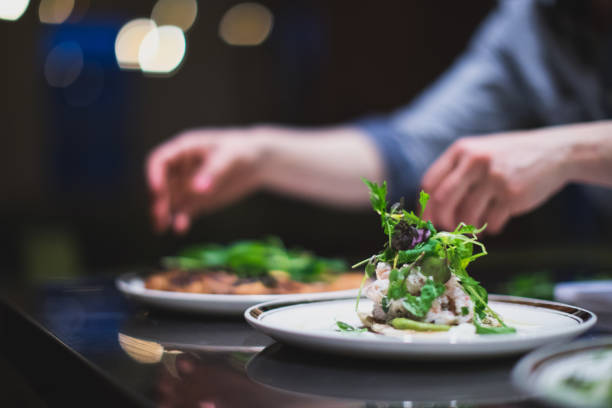Culinary Alchemy: Transforming Leftovers into Gourmet Delights
Reimagining yesterday's meals into today's culinary masterpieces is an art form that combines creativity, sustainability, and deliciousness. This gastronomic adventure not only reduces food waste but also challenges our culinary prowess, turning mundane leftovers into exciting new dishes that tantalize the taste buds and impress dinner guests.

Fusion Creations: Blending Cultures in Your Kitchen
Leftovers present a unique opportunity to experiment with fusion cuisine. Combine elements from different culinary traditions to create exciting new flavors. For instance, leftover spaghetti can be reimagined as an Asian-inspired stir-fry, tossed with soy sauce, ginger, and sesame oil. Or transform yesterday’s roast beef into Korean-style bulgogi tacos, topped with kimchi for an extra kick. This approach not only breathes new life into leftovers but also expands your culinary horizons, introducing your palate to unexpected flavor combinations.
The Art of Layering: Building Flavor Profiles
One of the secrets to elevating leftovers lies in layering flavors. Start with your base ingredient and build upon it with complementary tastes and textures. For example, turn leftover mashed potatoes into gourmet croquettes by adding herbs, cheese, and a crispy breadcrumb coating. Or reimagine leftover chili as a topping for loaded nachos, layering it with fresh vegetables, melted cheese, and a dollop of sour cream. The goal is to create a dish with depth and complexity that surpasses the original meal.
Texture Transformation: From Soft to Crispy
Texture plays a crucial role in how we perceive food, and transforming the texture of leftovers can make them feel entirely new. Crispy elements are particularly effective in refreshing dishes. Convert leftover risotto into crispy arancini balls, or use day-old pasta to create a crunchy pasta frittata. Even vegetables can be revitalized by pan-frying or baking until crisp. This textural contrast not only adds interest to the dish but also helps to disguise the fact that you’re working with leftovers.
Presentation: Plating Like a Pro
The final touch in transforming leftovers into gourmet delights is presentation. Even the humblest ingredients can be elevated with thoughtful plating. Use garnishes like fresh herbs, microgreens, or a drizzle of flavored oil to add color and visual appeal. Consider the balance of colors on the plate and use negative space to create an elegant look. Serve your reimagined leftovers on beautiful dinnerware to complete the gourmet experience. Remember, we eat with our eyes first, so a well-presented dish can turn a simple meal into a memorable dining experience.
Culinary Alchemy Tips & Facts
• Always store leftovers properly to maintain freshness and food safety.
• Think of leftovers as ingredients rather than finished dishes.
• Use aromatic herbs and spices to refresh and reinvent flavors.
• Incorporate a new protein or vegetable to create a completely different meal.
• Don’t be afraid to mix cuisines – some of the best dishes come from unexpected combinations.
• Invest in quality containers for storing leftovers to extend their life and maintain quality.
• Remember the 2-hour rule: refrigerate leftovers within 2 hours of cooking to prevent bacterial growth.
In conclusion, transforming leftovers into gourmet delights is a skill that combines creativity, resourcefulness, and culinary knowledge. By reimagining flavors, experimenting with fusion, layering tastes and textures, and presenting dishes beautifully, you can turn yesterday’s meals into today’s culinary masterpieces. This approach not only reduces food waste but also challenges you to become a more innovative and skilled cook. Embrace the art of culinary alchemy, and let your leftovers become the star of your next gourmet meal.





